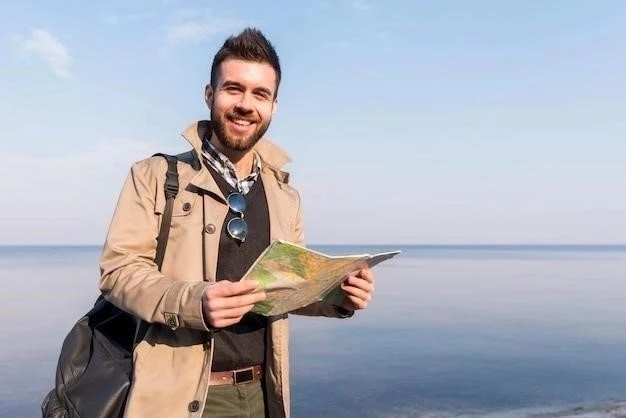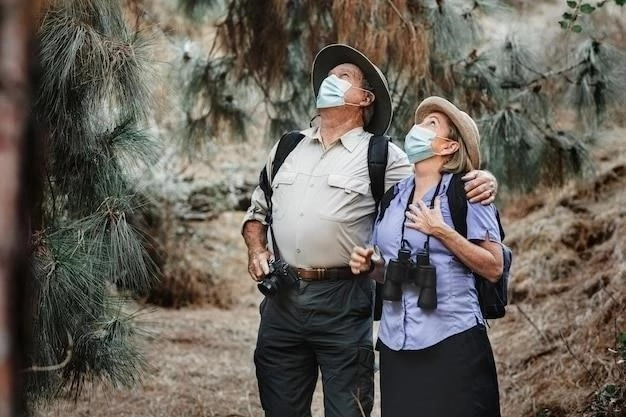Tajikistan Travel Guide 2024
Journey to the heart of Central Asia with our comprehensive Tajikistan Travel Guide. Discover a land of soaring mountains, shimmering lakes, and ancient Silk Road history. Whether you’re drawn to the rugged beauty of the Pamir Highway or the cultural treasures of Dushanbe, our guide provides essential information for planning your unforgettable Tajik adventure.

Planning Your Trip
Embarking on a journey to Tajikistan requires careful planning to ensure a rewarding and seamless experience. Begin by determining the ideal time to visit, considering your tolerance for varying weather conditions and desired activities. Research visa requirements based on your nationality, ensuring ample time for processing.
Developing a comprehensive budget is essential, factoring in accommodation, transportation, meals, activities, and visa fees. Consider the length of your stay and desired level of comfort. Explore accommodation options ranging from budget-friendly guesthouses to more upscale hotels, booking in advance, particularly if traveling during peak season.
Familiarize yourself with the local currency, the Tajikistani Somoni, and research currency exchange options. Pack appropriate clothing and gear for all types of weather, including layers for varying altitudes. Consider essential items such as a first-aid kit, sunscreen, and insect repellent. Finally, delve into the cultural nuances of Tajikistan, embracing the opportunity to engage respectfully with local customs and traditions.
Visa Requirements for 2024
Before embarking on your journey to Tajikistan, it’s essential to understand the visa requirements applicable to your nationality. As of 2024, citizens of numerous countries are eligible for visa-free entry for periods ranging from 30 to 90 days. These countries typically include those within the Commonwealth of Independent States (CIS), as well as select nations in Asia, Europe, and the Americas.

If your nationality is not exempt from a visa, you’ll need to obtain the appropriate visa before your arrival in Tajikistan. The most common type is the tourist visa, allowing for a specific duration of stay. You can apply for a Tajikistani visa through the embassy or consulate in your home country or online via the e-Visa system. The e-Visa process typically involves completing an online application, providing supporting documents, and paying the required fee.
When applying for your visa, ensure your passport has at least six months of validity remaining beyond your intended stay and contains blank pages for visa endorsements. It is advisable to gather all necessary documents, including a confirmed itinerary, proof of accommodation, and sufficient financial means. Contacting the relevant embassy or consulate for the most up-to-date visa requirements and processing times is always recommended.
Best Time to Visit
Tajikistan, with its varied landscapes and altitudes, experiences distinct seasons, each offering a unique perspective on this Central Asian gem. The optimal time to visit depends largely on your travel preferences and desired experiences. For those seeking pleasant weather and outdoor exploration, the shoulder seasons of spring (April to May) and autumn (September to October) are ideal.
During these months, temperatures are mild, ranging from the mid-teens to the low twenties Celsius (60s-70s Fahrenheit), making hiking and trekking in the Fann Mountains and exploring the Pamir Highway particularly enjoyable. Summer (June to August) brings warmer temperatures, sometimes exceeding 30 degrees Celsius (86 degrees Fahrenheit), especially in lower elevations.
While this period offers excellent conditions for high-altitude trekking, be prepared for intense sunshine and occasional rainfall. Winter (November to March) sees significant snowfall, particularly in the mountains, making travel challenging but rewarding for those seeking winter sports opportunities. However, some areas become inaccessible during this time.
Currency and Budget
The official currency of Tajikistan is the Tajikistani Somoni (TJS), denoted by the symbol SM. While credit cards are becoming more widely accepted in larger cities and some hotels, it’s essential to have a sufficient amount of local currency on hand, especially when traveling to smaller towns and rural areas. ATMs are available in urban centers but may be limited elsewhere.
Budgeting for your Tajikistan trip depends on your travel style and preferences. Accommodation costs can range from $10-20 per night for a bed in a hostel or simple guesthouse to $50-100 or more for a comfortable hotel room. Meals are generally affordable, with local restaurants and teahouses offering delicious Tajik cuisine for a few dollars per meal. Transportation, particularly shared taxis (marshrutkas) and buses, is inexpensive, with longer journeys on the Pamir Highway costing around $20-30.
It’s advisable to factor in additional expenses for activities such as trekking, guided tours, and entrance fees. A daily budget of $30-50 per person is reasonable for those traveling on a moderate budget, allowing for comfortable accommodations, local meals, and transportation. Luxury travelers should budget considerably more.
Accommodation
Tajikistan offers a range of accommodation options to suit various budgets and preferences, from simple guesthouses to comfortable hotels. In major cities like Dushanbe and Khujand, you’ll find a wider selection of international-standard hotels with modern amenities. These establishments often feature restaurants, bars, and other facilities catering to tourists.
For a more authentic experience, consider staying in guesthouses or homestays, particularly in smaller towns and villages. These accommodations provide a glimpse into local life and often include breakfast and the opportunity to interact with Tajik families. In more remote areas, such as along the Pamir Highway, traditional Pamiri houses offer basic but welcoming lodging. These houses, constructed from stone and mud-brick, typically feature communal sleeping areas with thick blankets to ward off the high-altitude chill.
When choosing your accommodation, it’s essential to consider factors such as location, amenities, and budget. Booking in advance is recommended, especially during peak tourist seasons. Online booking platforms provide a convenient way to browse options and compare prices.
Getting Around Tajikistan
Navigating Tajikistan’s diverse terrain presents an adventure in itself, with various transportation options available depending on your destination and time constraints. Shared taxis, known as marshrutkas, are a common and affordable mode of transport, particularly for shorter distances and between towns and villages. These minivans typically depart when full and offer a glimpse into local life.
For longer journeys, buses connect major cities and towns, providing a more comfortable alternative to marshrutkas. However, road conditions can be challenging, especially along the Pamir Highway, and journey times can be unpredictable. Domestic flights are available between Dushanbe and Khujand, as well as to some regional airports, offering a quicker but more expensive option.
For those seeking a more adventurous experience, renting a 4×4 vehicle is a possibility, particularly for exploring the Pamir Highway and other remote regions. However, it’s essential to have experience driving in challenging conditions and to be prepared for rough roads and unpredictable weather. Hiring a driver is recommended for those unfamiliar with local driving practices.
Health and Safety
Prioritizing your health and safety is paramount when traveling to Tajikistan. Before your departure, consult with your healthcare provider regarding recommended vaccinations and necessary precautions. Routine vaccinations, including hepatitis A and B, typhoid, and tetanus, are generally advised. Depending on your itinerary and planned activities, additional vaccinations, such as rabies and tick-borne encephalitis, may be recommended.
It is advisable to pack a well-stocked first-aid kit containing essential medications, insect repellent, sunscreen, and altitude sickness medication if venturing to higher elevations. Drinking bottled water is recommended, and be cautious with food hygiene, particularly when consuming street food. Travel insurance is highly recommended to cover any unforeseen medical expenses or emergencies.
Tajikistan is generally a safe country with a low crime rate. However, it’s always prudent to exercise caution, particularly in crowded areas, and to safeguard your valuables. Registering your travel plans with your embassy or consulate is advisable, especially if traveling independently or to remote regions. Familiarize yourself with local laws and customs, and always respect local traditions.
Top Destinations
Tajikistan, a landlocked nation in Central Asia, boasts an array of captivating destinations, each offering a unique glimpse into the country’s rich history, vibrant culture, and breathtaking natural beauty. Dushanbe, the capital city, welcomes visitors with its wide avenues, Soviet-era architecture, and bustling bazaars. Explore the National Museum of Tajikistan, stroll through Rudaki Park, and immerse yourself in the city’s lively atmosphere.
The Pamir Highway, one of the world’s highest and most scenic roads, winds its way through the heart of the Pamir Mountains, offering unparalleled views of snow-capped peaks, glacial lakes, and remote villages. Experience the warmth of Pamiri hospitality, marvel at the rugged landscapes, and venture to high-altitude lakes, including Karakul and Yashilkul.
The Fann Mountains, often referred to as the “trekker’s paradise,” enchant with their turquoise lakes, jagged peaks, and verdant valleys. Hike to the picturesque Iskanderkul Lake, trek through the Haft Kul (Seven Lakes) region, and challenge yourself with climbs to peaks exceeding 5,000 meters (16,400 feet). Each destination promises an unforgettable adventure.
Dushanbe: The Capital City
Dushanbe, the vibrant capital of Tajikistan, welcomes travelers with a captivating blend of Soviet-era architecture, bustling bazaars, and a burgeoning arts and culture scene. Begin your exploration at Dusti Square, the city’s central square, home to the imposing Palace of Nations, the official residence of the President of Tajikistan. Admire the grand architecture and the towering flagpole, a symbol of national pride.
Delve into Tajikistan’s rich history and heritage at the National Museum of Tajikistan, showcasing a vast collection of artifacts, including ancient manuscripts, traditional costumes, and archaeological finds. For a glimpse into the country’s diverse flora and fauna, wander through the serene Botanical Gardens, a tranquil oasis in the heart of the city.
Immerse yourself in local life at the bustling Shah Mansur Bazaar, a sensory feast of colors, aromas, and sounds. Browse through stalls laden with fresh produce, spices, traditional clothing, and handicrafts, and savor the flavors of Tajik cuisine at one of the many teahouses or cafes. As evening descends, experience Dushanbe’s vibrant nightlife.

The Pamir Highway
Embark on an unforgettable journey along the Pamir Highway, a legendary route traversing the heart of the Pamir Mountains, often referred to as the “Roof of the World.” This high-altitude road, one of the highest in the world, winds its way through breathtaking landscapes, connecting the Tajik capital, Dushanbe, to Osh in Kyrgyzstan. Along the way, encounter soaring snow-capped peaks, shimmering glacial lakes, and remote villages, where time seems to stand still.
Experience the warmth of Pamiri hospitality in villages such as Kalaikhum, Khorog, and Murghab, where you can interact with local communities and gain insights into their traditional way of life. Marvel at the engineering feat of the highway, constructed during the Soviet era, as it navigates treacherous passes and traverses dramatic gorges.
Capture breathtaking views of cascading waterfalls, pristine rivers, and expansive valleys adorned with wildflowers. The Pamir Highway is not merely a road; it’s a journey through history, culture, and awe-inspiring natural beauty.

The Fan Mountains
Venture into the heart of Tajikistan’s Fann Mountains, a breathtaking range renowned for its towering peaks, turquoise lakes, and verdant valleys, a paradise for trekkers, hikers, and nature enthusiasts. Explore the trails that wind through alpine meadows, past cascading waterfalls, and up to panoramic viewpoints that reveal the sheer magnitude of these mountains.
Discover the legendary Seven Lakes (Haft Kul), a series of glacial lakes, each with its own unique hue, from deep blue to emerald green. Hike to the shores of Iskanderkul Lake, a picturesque spot where legend has it that Alexander the Great once watered his horses. Challenge yourself with a climb to Chimtarga Peak, the highest peak in the Fann Mountains, reaching an elevation of 5,489 meters (17,976 feet).
Immerse yourself in the tranquility of the mountains, where the air is fresh, the scenery is breathtaking, and the silence is broken only by the sound of birdsong and rushing water. The Fann Mountains offer an escape into a world of natural splendor.
Iskanderkul Lake

Journey to the heart of the Fann Mountains to discover the legendary Iskanderkul Lake, a true natural wonder. Nestled at an elevation of 2,195 meters (7,200 feet) above sea level, this turquoise gem shimmers amidst a dramatic landscape of jagged peaks and verdant slopes. Legend has it that the lake is named after Alexander the Great, who is said to have watered his horses here during his conquests in Central Asia.
Hike through alpine meadows and along forested trails to reach the lake’s shores, where you’ll be greeted by breathtaking panoramic views. The clear, azure waters of Iskanderkul reflect the surrounding peaks, creating a scene of unparalleled beauty. Take a refreshing dip in the cool waters, or simply relax on the shore and soak up the tranquility of this alpine paradise.
Near the lake, discover the cascading waters of the 38-meter (125-foot) high Fan Niagara waterfall, adding to the splendor of this natural wonder. Iskanderkul Lake is a testament to the raw beauty of Tajikistan’s mountainous landscapes and a must-visit destination for nature enthusiasts.

Culture and Etiquette
Tajikistan, steeped in history and tradition, possesses a rich and vibrant culture. Understanding local customs and etiquette is essential for respectful and meaningful interactions with the Tajik people. Hospitality holds a revered place in Tajik culture, and guests are often greeted with warmth and generosity. It is customary to accept offers of tea or snacks, as refusing may be considered impolite.
When entering a home, it is customary to remove your shoes as a sign of respect. Dress modestly, particularly when visiting religious sites or rural areas. Conservative attire is generally appreciated, with women often covering their heads with scarves. Greetings are typically formal, with handshakes reserved for men. Women may place their right hand over their heart as a gesture of respect.
When engaging in conversations, avoid discussing sensitive topics such as politics or religion. Family is highly valued in Tajik society, and it is common for people to inquire about your family’s well-being. Embrace the opportunity to learn about Tajik traditions, sample local cuisine, and engage in cultural exchanges, fostering mutual understanding and appreciation.
Food and Drink
Tajikistan’s culinary landscape offers a delightful fusion of Central Asian, Persian, and Russian influences, resulting in hearty and flavorful dishes. A staple of Tajik cuisine is plov (osh), a fragrant rice dish cooked with meat (typically mutton or beef), onions, carrots, and spices. Served in generous portions, plov is often enjoyed communally, with diners gathering around a large platter.
Manti, steamed dumplings filled with meat or vegetables, are another popular choice, often served with a dollop of sour cream or yogurt. Shashlik, grilled skewers of marinated meat, is a ubiquitous street food item, enjoyed with freshly baked naan bread. For a refreshing accompaniment, try ayran, a yogurt-based drink, or savor the flavors of shirin chai, a sweet black tea often enjoyed at the end of a meal.
Vegetarians will also find options, with lentil soups, vegetable stews, and a variety of salads featuring fresh herbs and local produce readily available. Embrace the opportunity to sample these culinary delights, savoring the unique flavors of Tajikistan.
Shopping and Souvenirs
Browsing through Tajikistan’s bustling bazaars and shops offers a delight for the senses and an opportunity to discover unique souvenirs and treasures. Handicrafts hold a special place in Tajik culture, with skilled artisans crafting intricate pieces that reflect the country’s rich heritage. Look for suzani, vibrantly embroidered textiles often used as wall hangings or bedspreads, each one a testament to the artistry of Tajik women.
Ceramics, particularly from the ancient city of Istaravshan, make for beautiful and practical souvenirs. Seek out intricately painted bowls, plates, and teapots, each piece reflecting traditional motifs and designs. For those who appreciate fine textiles, silk scarves, shawls, and fabrics from the Silk Road city of Khujand are exquisite choices. Woven with intricate patterns and vibrant colors, these luxurious items make for treasured gifts or personal mementos.
When bargaining for souvenirs, remember that haggling is a common practice in Tajikistan’s markets. Approach the process with a smile and a sense of humor, and be prepared to negotiate a fair price.
Responsible Tourism
As you embark on your journey through Tajikistan, embracing the principles of responsible tourism ensures that your travels benefit both the local communities and the pristine environment. Support local businesses by choosing accommodations, dining options, and tour operators committed to sustainable practices. Seek out homestays, guesthouses, and locally owned restaurants to directly contribute to the local economy.
Respect the environment by minimizing your ecological footprint. Dispose of waste responsibly, opting for reusable water bottles and bags whenever possible. Be mindful of water conservation, particularly in regions where water resources are scarce. When hiking or trekking, stay on designated trails to protect fragile ecosystems and avoid disturbing wildlife.
Engage respectfully with local communities, embracing the opportunity to learn about their culture, traditions, and way of life. Seek permission before taking photographs of individuals, and dress modestly, particularly when visiting religious sites. By traveling responsibly, you contribute to a more sustainable and enriching experience for both yourself and the people of Tajikistan.











